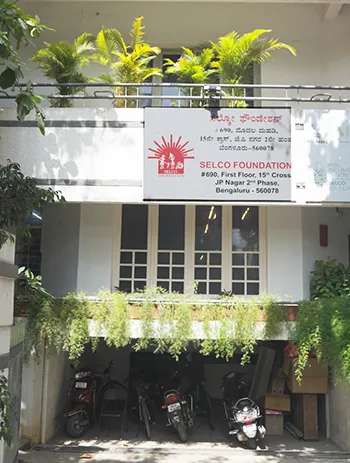Introduction
While the development community initially doubted the notion of a viable business model for solar energy for the rural poor, the idea had gained many supporters by the 2000s. Solar energy, after all, seemed to offer a sustainable option to enhance rural development. Independent of unreliable grids or polluting generators, solar power could provide residential and commercial lighting, as well as power simple devices. And yet, numerous solar projects languished, others were abandoned, as the business model seemed to fail to deliver on its promise.
Though a long-time advocate of sustainable and Decentralized Renewable Energy (DRE) for the poor, Harish Hande was not surprised by how some large-scale efforts to deploy solar in development had gone awry. He founded SELCO India, a for-profit company, in 1995 and learned that introducing solar meant more than delivering a panel and a battery. Especially for the poor, solar had to come with an appropriate plan for financing and maintaining the apparatuses. Devices to be powered by solar had to be adapted to the output of the panels and there had to be demand for the services or merchandise produced. In short, an entire ecosystem had to be mobilized to support a DRE intervention.
Hande founded the SELCO Foundation (SF) to apply the insights gained at SELCO India to the problems of development writ large. In contrast to those who began with the objective of deploying as many solar panels as possible, SF stressed the importance of designing a system with the end user and their supporting ecosystem in mind. The Foundation worked with rural households, small technical organizations, financial institutions, and community organizations to test, pilot and scale particular interventions. For Hande, SF’s goal was not just to create various DRE solutions, but also to promote design thinking among development organizations and to provide what Hande described as “Lego Blocks” that others could put into place for their own development initiatives throughout the world. SF worked in many locales in India, but the Foundation targeted India’s rugged Northeast states as a test bed that could offer an instructive set of lessons.

Selco Foundation Headquarters in Bengaluru
While SF worked in many facets of development (e.g. health, education), the Foundation’s work on livelihood promotion presented an especially thorny set of challenges to their design approach – issues that needed to be solved in order to diffuse their methods to other organizations. SF’s experiences in the Northeast showed that the existing ecosystem to support microenterprises in a region could be disconnected, antiquated, and resistant to change. Therefore, rather than simply aligning civil society and technical organizations, the Foundation had to incubate support organizations so that they could in turn help microentrepreneurs.
The requisite complexity in the scope of projects would be an even more acute problem outside of India. Foundation staff recognized that taken-for-granted ecosystem pieces in India could be absent in other locations. The issue would be less of bridging gaps between existing entities but creating organizations and resources de novo. This represented a tall order for anyone trying to emulate SF’s approach - How would a designer of an intervention define a feasible scope for a given intervention?
Furthermore, to a greater extent than other verticals, livelihood promotion was culturally and geographically specific. SF faced the challenge of translating the experiences of the microenterprises it seeded in one region in India with a different set of livelihoods that were present in other parts of the country and of the world. What of SF’s experiences could be communicated with other development and DRE organizations?
Furthermore, other NGOs considered SF a special case as the Foundation had committed funders willing to look at the long-term progress of SF’s interventions holistically over time. More traditional funders and NGOs relied on narrower, short-term output metrics to measure progress. Should SF try systematizing the ecosystem approach and develop useful yardsticks to evaluate success, with an eye toward shifting how more traditional funders and NGOs approached development? If so, what might those metrics be?